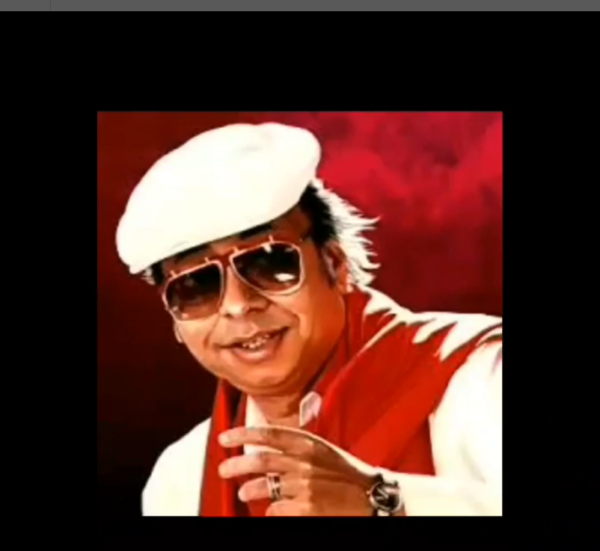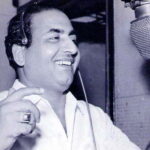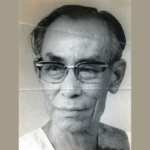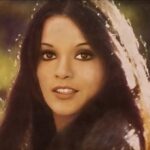On June 27, Rahul Dev Burman was born—and every year on that date and on January 4, when he cast away his mortal body, he is celebrated like no one else among composers is.
He is supposed to be the king of Remixes and Re-Creations (the difference being in maintaining original lyrics in the first case and modified words and even add-on portions in tune for new films or albums). He is hyped at the expense, principally, of his father, S.D. Burman, his contemporaries and dearest friends, Kalyanji-Anandji and Laxmikant-Pyarelal (his arrangers as well in his first two films) and the indomitable Shankar-Jaikishan.
These fanatics (a sorry situation for a talent of RD’s stature!) claim to pay obeisance to an icon of rhythm. But can someone whose music was as advanced as tomorrow be made any more modern at all today? And can devotion be expressed by defiling the very work that has generated it?
There is also that huge coterie of unthinking individuals that have made Pancham some kind of god and take his name as their idol or icon. Trouble is, this is done not with genuine, knowledge-driven reverence, but with casual or distorted and fanatic militant zealots!
R.D. Burman, a man who was always dished out step-motherly treatment in life by a capricious destiny, has become a fashion statement for decades after death, a brand akin of musical Versace, his songs as cool as the latest Reebok, or as hot as the latest MacDonald fast food. His current image as the czar of composers in one stroke decimates the importance and phenomenal contributions of seniors and contemporaries whose total contribution was as great or greater, a fact as unfair to him and to them all as it is painful to the unbiased music buff. And having met him, I know he would have hated it!
I would therefore wish to enlighten such unenlightened fans that are prone to drop his name as rapidly and meaninglessly as inhibitions are shed in an Indian web series since censorship do not exist! And genuine RD lovers are distressed to find a giant composer relegated to becoming a sensation merely because his music had a vision far ahead of his time and a canvas that extended far beyond Indian shores.
Today, the need of the hour therefore is to introduce the real Rahul to this club, in the hope that they can explore the vistas of Pancham-land and either become genuine admirers of the composer or let their fickle attention move on elsewhere.
R.D. Burman’s basic identity as the son of one Hindi cinema’s greatest-ever yet ethnic composers, S.D. Burman, his training under him (and the resultant mammoth exposure to Rabindra Sangeet and East Indian folk) and Ustad Ali Akbar Khan, all gave RD a solid Indian core that the composer never abandoned or allowed to be downplayed the way some of the later trendy composers are prone to do.
For Pancham, Western (or any other non-Indian) music was a packaging, an embellishment, and at the most a significant segment of the personality of a song, and in the final analysis the means to an end-product so individualistic that none of his subsequent wannabe clones can hope to imitate, let alone match.
It was if as these Burman beauties were various thoroughbred Indians, one only dressed in a Western outfit, a second wearing a salwar-kameez with a cut similar to a Western suit, a third having lived abroad and adopted some of another culture’s most refined or positive qualities that merged seamlessly with the Indian roots and values. And proof of this lay in the fact that everyone from hardcore classicists to the rural masses loved his songs.
To the genuine Pancham-premee¸ RD was thus more about Jaaoon to kahaan jaaoon (Asha) rather than Baahon mein chale aao (Lata) in the Anamika context, superb though the latter number was. In Bhoot Bungla, we tangoed to a Aao twist karen (Manna Dey) but needed a Jaago sonewaalo (as RD’s first-ever excursion with fave singer Kishore Kumar) to linger on as proof of RD’s colossal potential as early as in his second film.
These Pancham-ignoramuses, as we RD-lovers would like to term the pseudo-fans who swear only by his re-treated and more plebian (for commercial reasons) songs, would be interested (or is the word ‘aghast’?) to know that RD first made people sit up and take notice of him, not with the zingy numbers of Teesri Manzil (1966), The Train (1970) or Hare Rama Hare Krishna (1972), but with the raag-soaked Ghar aaja ghir aaye badraa saanwariya from his 1961 debut Chhote Nawab.
And for RD, going as expertly shastriya (classical) as anyone else turned out to be a frequent exercise in films as diverse as Padosan (Ek chatur naar/Kishore-Manna-Mehmood), Buddha Mil Gaya (Aayo kahaan se Ghanashyam/Manna Dey), Amar Prem (Raina beeti jaaye/Lata), Parichay(Lata-Bhupendra’s Beete na bitaayi raina and Bhupendra’s Mitwa bole meethe bain), Kinara (Lata-Bhupendra’s Naam gum jaayega) and all those semi-classical lovelies like Iss mod pe jaate hain(Lata-Kishore/Aandhi), Rimjhim gire sawan(Kishore/Lata separately in Manzil), Bhor bhaye panchhi(Lata/Aanchal), Sajti hai yoon hi mehfil(Asha/Kudrat), Yeh faasle yeh dooriyan(Lata/Zameen Aasmaan) and Saagar kinare(Lata-Kishore/Saagar).
Perhaps these RD-bhakts would also like to revisit some of Pancham’s solid but ‘unfashionable’ early beauties if they do not forever defile their image of him as a rhythm king – Paar lagaa de mere and Sharaabi sharaabi mera naam ho gaya (both from Lata in Chandan Ka Palna), Kya jaanoo sajan (Lata /Baharon Ke Sapne), Zamane ne maare jawaan (Rafi from the same film), Waadiyaa mera daaman (Lata/Rafi separately from Abhilasha), Nisultana re (Rafi-Lata), Chekhush nazarein (Rafi), Na jaa o mere humdum (Lata) and Tum bin jaaoon kahaan (Rafi/Kishore separately) – all from that perennial music-fest called Pyar Ka Mausam, Bhai battur (Lata) and Kehna hai (Kishore), those two non-hyped lovelies from Padosan and the twin Lata-Rafi highs,Lehrake aaya hai and Kabhi kabhi aisa bhi to from Waris.
Never a Mukesh fan like his father– the style did not fit too well into the RD leitmotif – Pancham nevertheless went on some terrific Mukesh outings like Jis gali mein tera ghar (Kati Patang), Kahin karti hogi (With Lata /Phir Kab Milogi) which met us again as pop singer Annamika’s sex-changed ‘worse’ion in the ‘90s!), Suraj se jo kiran ka naata (With Lata / Hungama), Suhani chandni raatein(Mukti) and finally Ek din bik jaayega(Dharam Karam). And Mukesh, Annamika excepted, was no dance floor or remix-material.
And so Pancham could have been a Rahman precursor – but he chose not to be. His compositions dominated over his unique arrangements and sound, rather than vice-versa in the case of the so-called Indian Mozart. The freshness, the all-pervading innovation and even the ‘fusion’ lay primarily in the tune (the core) rather than in the sound (the packaging). It is this quality which makes those who compare Rahman with this brilliant colossus guilty of both complete blasphemy and pitiable ignorance.
Let us also examine, to get to first base with the real RD, the music director’s rarer experiments with other homespun names like Suman Kalyanpur (Suno ji tum, tum bade woh ho/Saas Bhi Kabhi Bahu Thi with Kishore), Parveen Sultana (Hamein tumse pyar kitna/Kudrat), Shivaji Chhatopadhyaya (Yeh safar bahut hai kathin/1942-A Love Story), S.P. Balasubramaniam (Hum na samjhe the/Gardish), Suresh Wadkar (Tumse milke/Parinda and Sawan nahin bhadon nahin/Kudrat both with Asha Bhosle), Narendra Chanchal (the title song from Benaam), and both Anwar (Duniya badal rahi hai/Hum Hain Lajawab) and Shabbir Kumar (Betaab) in their respective duets with Lata in these films.
Obviously, Pancham vocal avenues in the Indian milieu—Pandit Vasantrao Deshpande, Faiyyaz, Peenaz Masani, Anup Jalota, Mahendra Kapoor and Shamshad Begum—could be added to this list (though the results were not as fruitful) much more frequently than his indulgences with Westernized voices like Annette, Ursula and Usha Uthup.
Finally, what made RD stand out as a path-breaking maestro was that he did not need a frenetic number to demonstrate his wondrous beats. In an amazing synergy of compositional solidity and superlative orchestral genius, Pancham could effortlessly and incredibly work in rhythm into a slow number.
Not for him the heavy pulsating beats, the high vocal pitches or the techno gimmickry. For Pancham could sway both our souls and soles with numbers as soft -or as tranquil – as Kishore’s O hansini (Zehreela Insaan), Lata’s Dilbar dil se pyare (Caravan), Jab tum chale jaaoge (Bullet), Asha-Kishore’s Aao jaan-e-jahaan(Gomti Ke Kinare), Ek main aur ek tu (Khel Khel Mein) or the title-track of Yeh Waada Raha and that rare Asha-RD beauty, Aasmaan se ek sitara, from the non-starter Raahi Badal Gaye.
And so, all we genuine RD-aficionados would like to say is that Rahul Dev Burman is mainly about content, not form alone. We need to understand his genius before taking his name only because it is the ‘in’ thing to do. Being Pancham is not about being ‘in’ or ‘out’.
RD – the real, the original, the unmixed RD – is forever.
(Used under special arrangement with NIT)






